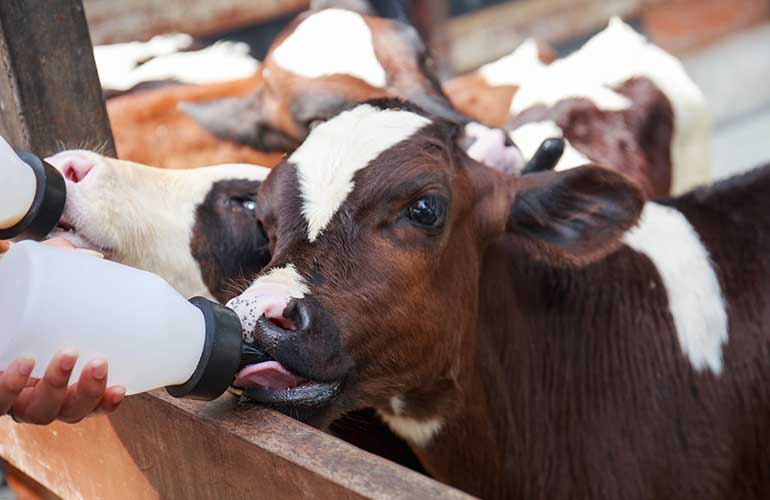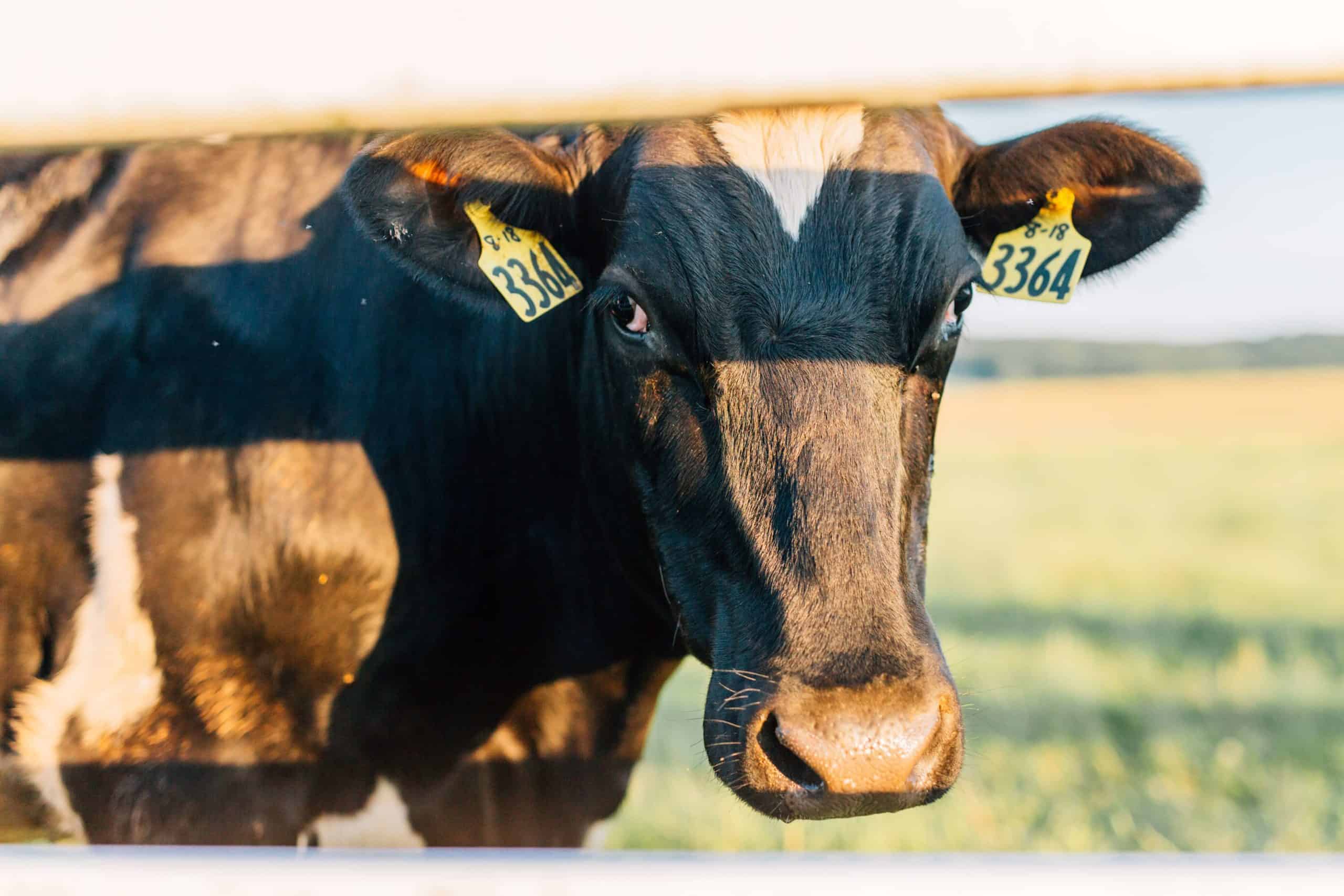Scours – Rehydration

Electrolytes have a much lower energy value than milk feeding and where possible milk feeding during scouring should be continued as much as possible. Never withhold milk from a young calf for more than 24 hours
A calves symptoms will determine the % dehydration when deciding how much to administer to your calf. See below for symtoms and percentages:
| CALF SYMPTOMS | % DEHYDRATION |
|---|---|
| Diarrhoea only | 5% |
| Eyes slightly sunken, skin losing elasticity, calf staggering but still suckling | 7% |
| Eyes sunken, skin slow to flatten when pinched, sticky gums, calf depressed and reluctant to feed | 9%* |
| Eyes deeply sunken, skin won’t flatten out if pinched, calf cannot stand | 12%* |
* These calves will need to have intravenous fluids administered by a veterinarian
Rehydration calculation formula
Guide to calculating the minimum electrolyte therapy for a scouring calf. In this example our calf is 45kg,
Formula
(Rehydration quota + Maintenance quota) = Total Electrolyte Volume
- The volume of fluid required for rehydration is obtained by multiplying the weight of the calf by the % of dehydration suffered.
∴ a 45 kg calf x 5% dehydration = 2.25L of electrolyte
- Next add the maintenance quota of electrolyte based on 10% of the calf weight.
∴ a 45 kg calf = 4.5L for maintenance
- So according to the formula:
2.25L Dehydration + 4.5L Maintenance = 6.75L Rehydration
This calf needs 6.75L minimum rehydration per day.
Recommended electrolyte/milk feeding regime
| AM | NOON | PM | OVERNIGHT | |
|---|---|---|---|---|
| Moderate Scours | Milk 1-2L | Electrolytes | Milk | Electrolytes Ad-lib 2-4L |
| Total: 6-8L | ||||
| AM | NOON | PM | OVERNIGHT | |
|---|---|---|---|---|
| Severe Scours | Electrolytes 2L | Milk 1-2L | Electrolytes 2L | Electrolytes Ad-lib 4-6L |
| Total: 8-10L | ||||
- Isolate the calf – keep records and feed accordingly
- Offer electrolytes via a Bovivet tube drencher if the calf is not suckling. If the calf is suckling use a teat feeder, trough or bucket
- No other calf should be allowed access to the sick calf’s electrolytes or milk in order to prevent cross infection. The sick calf must take all the fluids
- Use a good quality electrolyte that has been recommended by your veterinarian
- Ensure that the electrolytes and milk that are to be administered are warm

